22nd Feb 2024
The Top 7 Office Design Trends for 2024
Conventional office layouts based on rows of desks no longer fit with the agile and varied work we do today.
So what’s next for office design in 2024?
The answer is to a more holistic approach that considers peoples’ health, wellbeing, and their needs as human beings. It’s no longer about getting as many desks as possible into a space as most people don’t even work at the same desk day in day out anymore.
With this in mind, we’ve compiled a list of the emerging office design trends our workplace consultants think you need to look out for this year.
We discuss:
- Bringing a sense of home to the office
- A focus on wellbeing
- Hybrid first approaches
- Sustainability-driven office design
- Integrated technology
- Community and collaboration
- Workplaces as inclusive destinations
1. Bringing a sense of home to the office
A sense of choice and control
Why?
According to the ‘human givens’, autonomy and control is one of the fundamental drivers of human nature. In other words, something that we all innately look for to be happy.
Post-pandemic, going from home working (sitting on the sofa or at the kitchen table whenever we like) to sitting back at the same desk all day, highlighted the lack of choice that traditional office layouts provide.
Now, people understandably want more of a say in how and where they work.
What you can do
So how do you give people choice and control in the office?
Elements like:
- adjustable, movable furniture
- customisable lighting and temperature controls
- a variety of work settings to cater to different tasks and preferences
- a culture that give people confidence to choose where they work
Providing more choice and control naturally creates a more inclusive workspace too.
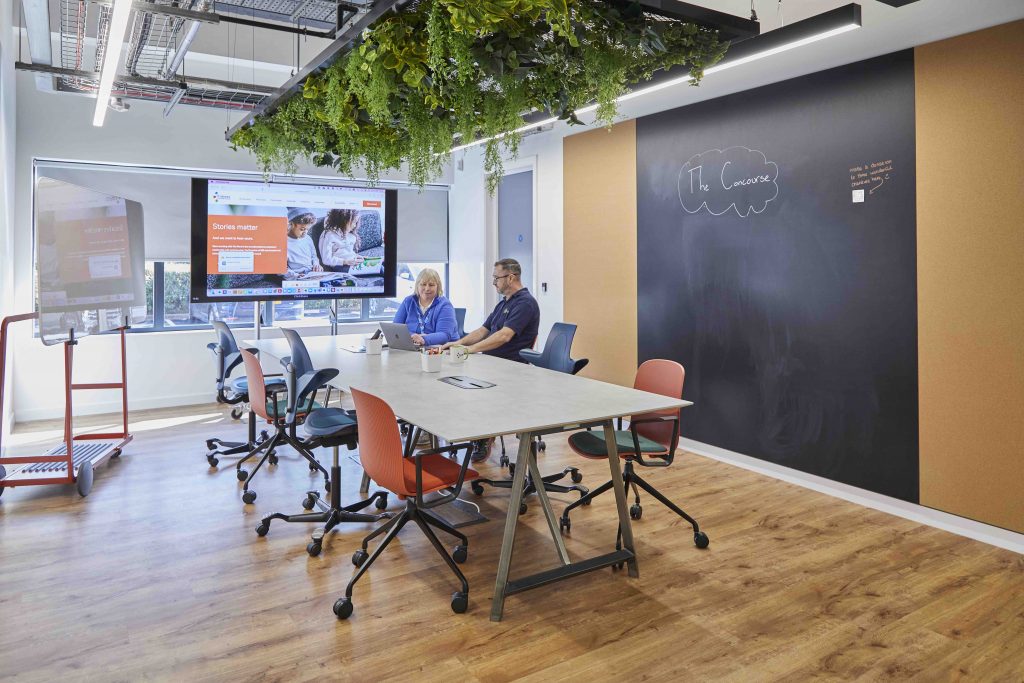
Comfortable furniture
Why?
Comfortable furniture in offices isn’t new but it is becoming increasingly popular and more of an essential feature, rather than a ‘nice to have’.
What you can do
We’re not saying replace all desks with sofas. Far from it. It’s more about giving options so people can choose where they feel comfortable working at any given time.
Provide desks, but also create more relaxed working areas for people to use when they need a change of scenery.
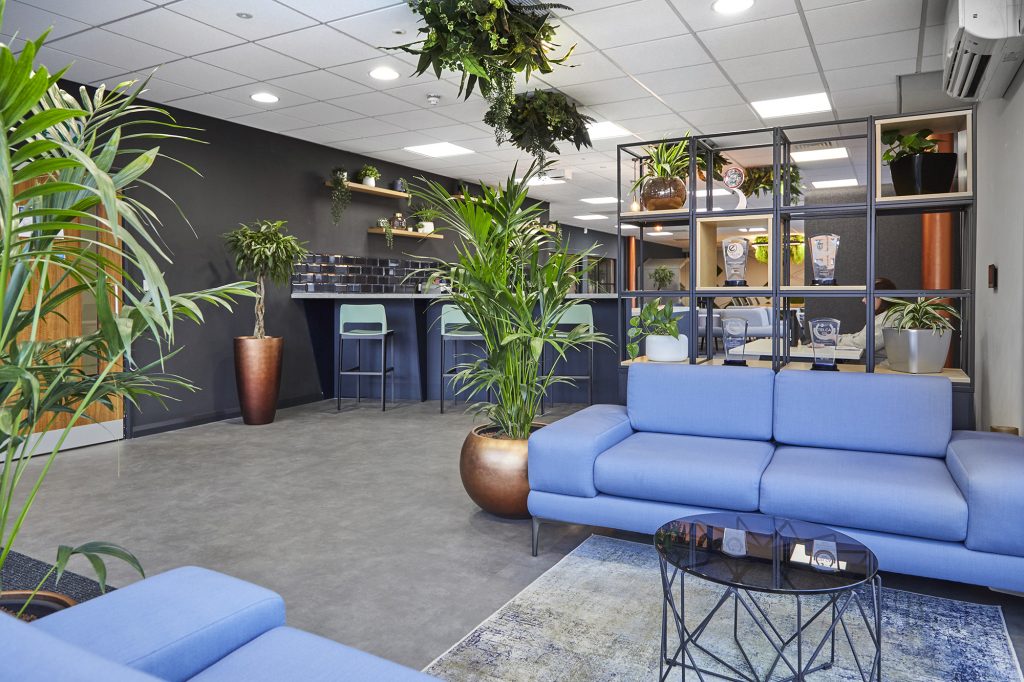
2. A focus on wellbeing
Why?
We’ve had more companies asking how they can think about wellbeing within their office design over the last few months than ever before.
Global workplace design and thought leader Steelcase recently completed research across 11 countries on workplace issues that leaders think will become more important in the next year.
Employee wellbeing topped the list with 81%.
The International WELL Building Standard also outlines ‘Mind’ as one of its ten central concepts for creating built environments that support health and wellbeing.
It says that spaces should “promote mental health by influencing cognitive and emotional wellbeing”.
What you can do
As well as dedicated wellbeing areas, elements like natural light, greenery, comfortable furniture and quiet spaces for relaxation all support wellbeing for obvious reasons.
Wellbeing extends to workplace culture too.
Your office space can act as the springboard for increasing workplace wellbeing – but you should champion it through your culture for people to get the real benefit.
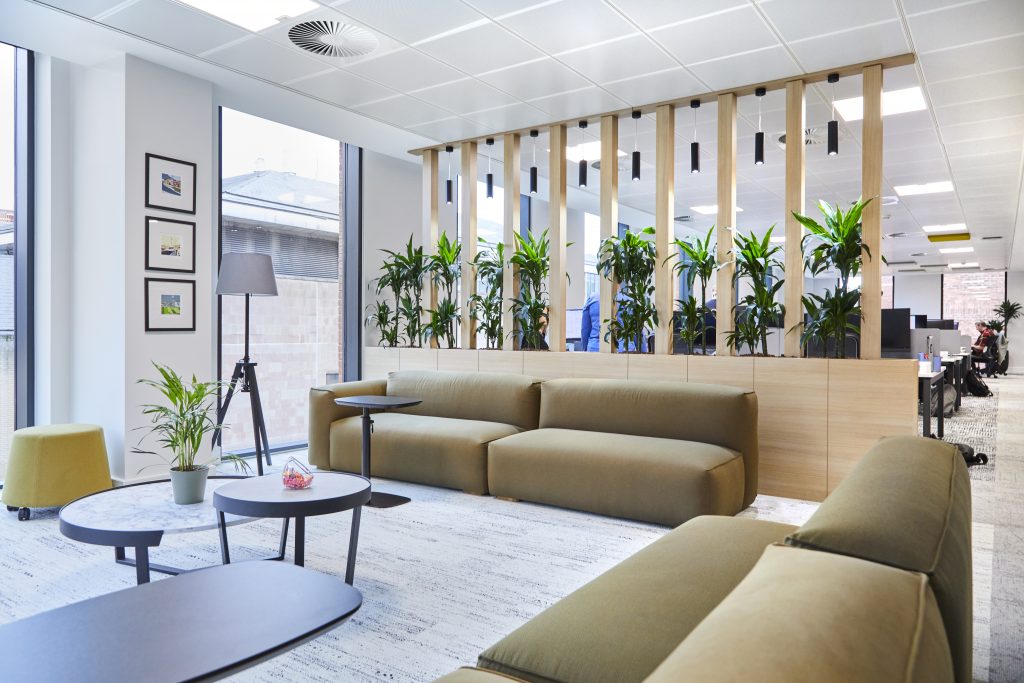
3. Hybrid first: Adaptability and flexibility
Hybrid-friendly layouts
Why?
We all use things like Teams as an alternative to face-to-face interactions to stay connected wherever we’re working. Whilst most companies have embraced this, people have also realised the limitations of these tools.
That’s why we need to design layouts for when colleagues are office-based AND when they’re working remotely.
What you can do
Good workplace technology is, of course, central to creating effective hybrid spaces.
Hybrid-friendly office layouts can include things like designated hot desking spaces, well-equipped video conferencing facilities, and layouts that encourage hybrid collaboration.
At a minimum, invest in good quality microphones and cameras to keep people connected between locations, without the frustration that comes with using outdated tech!
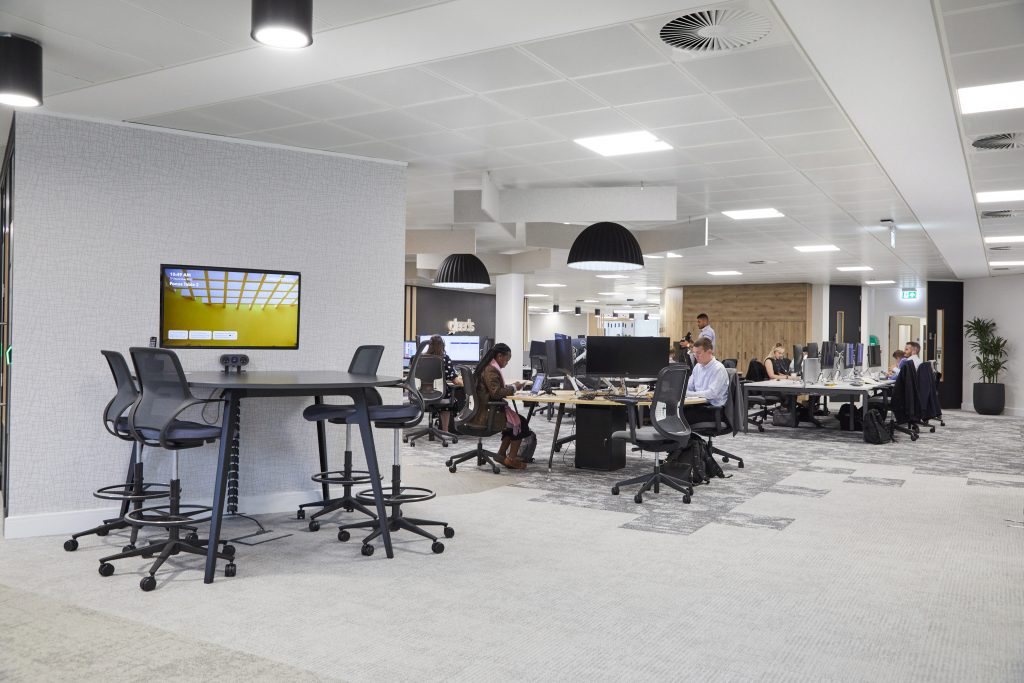
Modular furniture and partitions
Why?
Autonomy and control are things that, as humans, we all fundamentally need.
So allowing people to have that at work – including when it comes to their physical surroundings – is a huge bonus if you can offer it.
The WELL Building standard outlines movement and sound as two of the ten main areas that are essential to promote workplace wellbeing too.
So the more control you can give your people over these things, the more healthy, productive and happy they are likely to be at work.
What you can do
Movable furniture and partitions allow people to adapt spaces to changing needs and for different tasks.
It’s amazing what you can do to create impromptu meeting spaces with clever acoustic solutions and adaptable tables and chairs.
Simple things like getting meeting tables with lockable wheels means people can easily adapt rooms to fit the activity or task at hand.
One of our favourite things to use in our own agile workspaces is a TV screen on a movable mount. Even better if you have remote screen sharing on it so you can connect your devices from anywhere and aren’t restricted by cables.
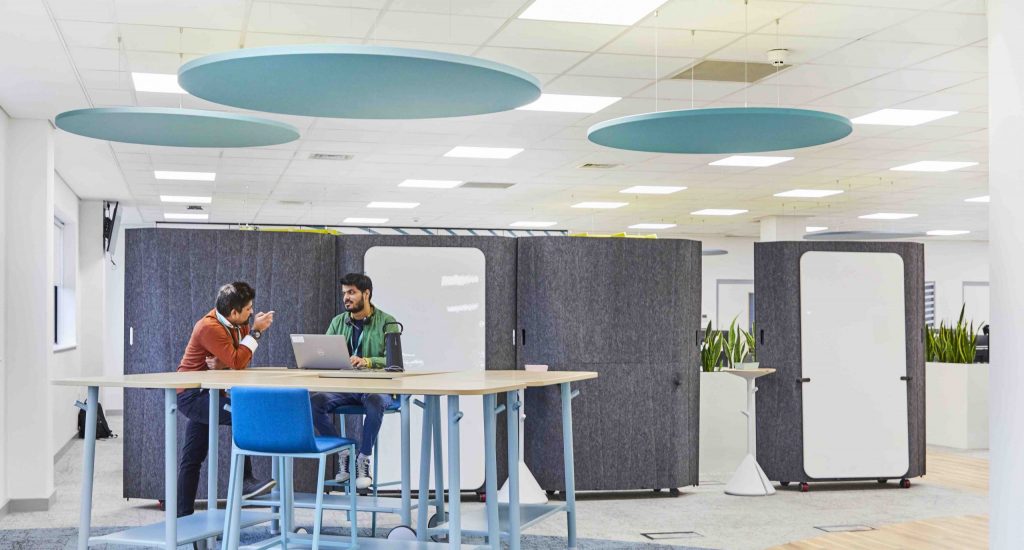
4. Sustainability-driven office design
Eco-friendly materials
Why?
Gone are the days of buy, use, discard. More companies are opting for sustainable furniture, energy-efficient appliances, and recycling programs to minimise their environmental impact.
We expect to see initiatives like this increase in 2024. This is largely down to the cost-of-living crisis – we’re expecting companies will become more frugal, but that doesn’t mean skimping on the essentials.
What you can do
Sustainability in office design could mean energy-efficient LED lighting, upcycled furniture, or investing more in certain pieces to ensure they last longer and have less impact on our planet.
Facilitating more sustainable business practices
Why?
Over and above making sustainable office design decisions, employers are looking at how their workspaces can facilitate more sustainable long-term business practices.
Accreditations like B Corp are rising in popularity, and are all about giving employers frameworks to do business for good in all areas of the company.
Because of this, we expect to see more companies considering how they can use their workplaces to encourage their people to live and work more sustainably.
5. Integrated Technology
Smart features
Why?
Many of our clients are already asking for advice on how to use automation to remove barriers and create a more seamless office experience for their people.
Utilising smart systems can help with common issues like an office that’s too bright, or too hot. Or having to kick colleagues out of a meeting room because there’s no easy way to see if it’s booked or not.
What you can do
We expect to see more offices incorporating sensors and automation for things like lighting and temperature control (lighting and thermal comfort are two more of the WELL Building Standard categories for creating a healthy workplace).
For example, if it’s hard to maintain a comfortable temperature in your office, a simple but effective improvement would be to upgrade your air conditioning system.
Central automated room booking systems are also a game-changer for massively reducing admin, and those awkward “have you got this room booked?” conversations.
Basically, consider what you can introduce to make your employees’ lives easier and remove potential stress-inducers.
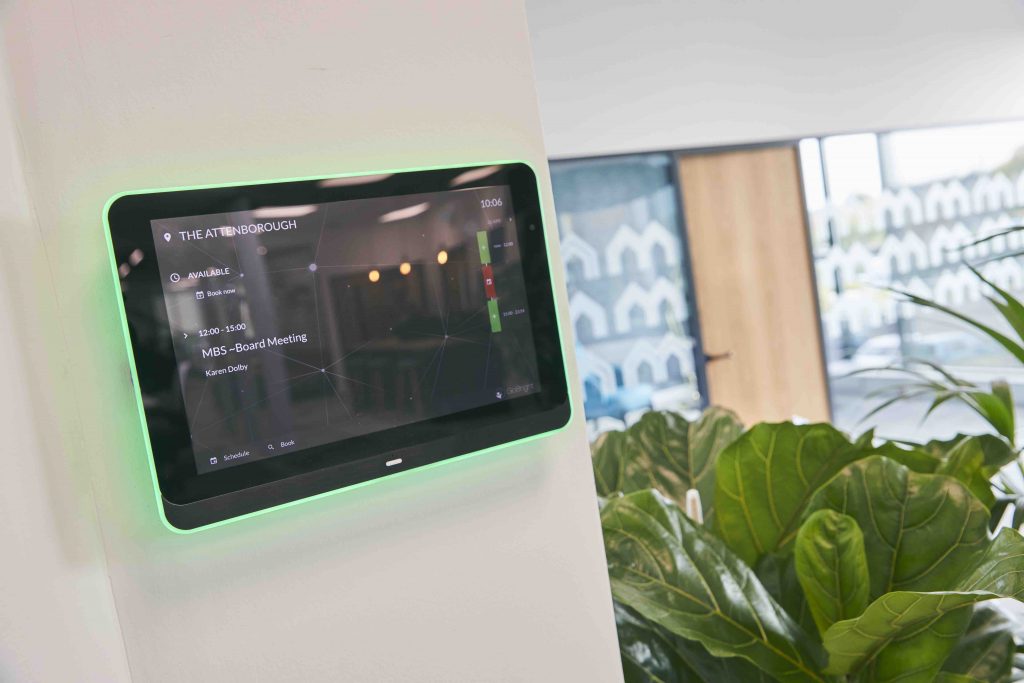
Data-driven design
Why?
Larger companies are already using data to track how employees use their spaces so they can make informed decisions about design changes.
Rather than guessing what your people would benefit from, it means you can clearly see the things you need to introduce to boost your team’s wellbeing and productivity.
What you can do
Workplace wellbeing apps that link to the wearables that many of us already use are becoming more common. If you haven’t already, look them up as we think this is one of the fastest-growing office design trends that will only gather pace in 2024.
6. Community and Collaboration
Breaking down silos
Why?
Feeling part of a wider community is another of the fundamental human needs that the ‘Human Givens’ theory discusses.
Whether in person or virtually, there’s nothing better than getting creative and solving problems as a team.
The WELL Building Standard also outlines community as a health and wellbeing booster, and measures spaces on their ability to “Build a culture of health that establishes an inclusive, engaged occupant community”.
The more you can help people collaborate, especially when together in the office, the better the employee experience AND business outcomes will be.
What you can do
Open floor plans and designated collaboration spaces encourage interaction and idea-sharing between teams.
In practice, this could look like breakout areas, cafes, and game rooms. All of which, if done well, can foster a sense of community and belonging by creating more casual team-building scenarios.
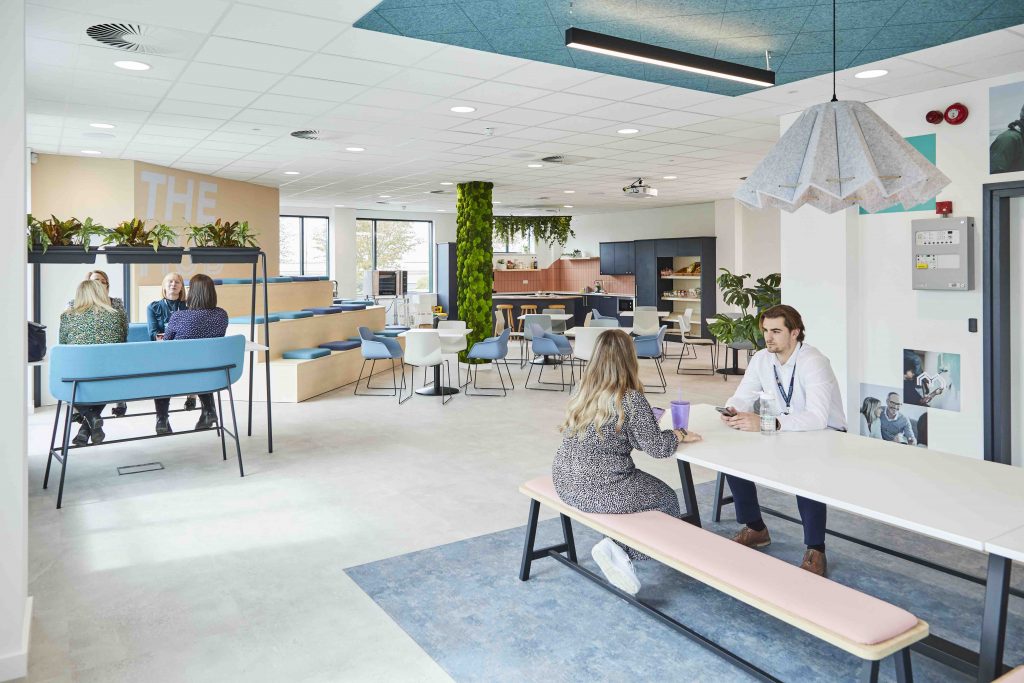
7. Workplaces as inclusive destinations
Needs-based design
Why?
Workplaces now need to offer more than just spaces to work.
It’s often the case that we do our best (and most enjoyable!) creative work together in person.
Yes, we can collaborate on video calls but it doesn’t measure up to what we can achieve face to face.
So offices need to be places where people enjoy spending time and want to visit. This means catering to people’s needs.
What you can do
Mandating X days in the office isn’t the answer. If you do that, you take people’s autonomy away.
Instead, ask your team what their ideal office looks like.
Be specific with what you want people to tell you about to make it easier for them to take part.
Once you have these insights, move forward with your design ideas.
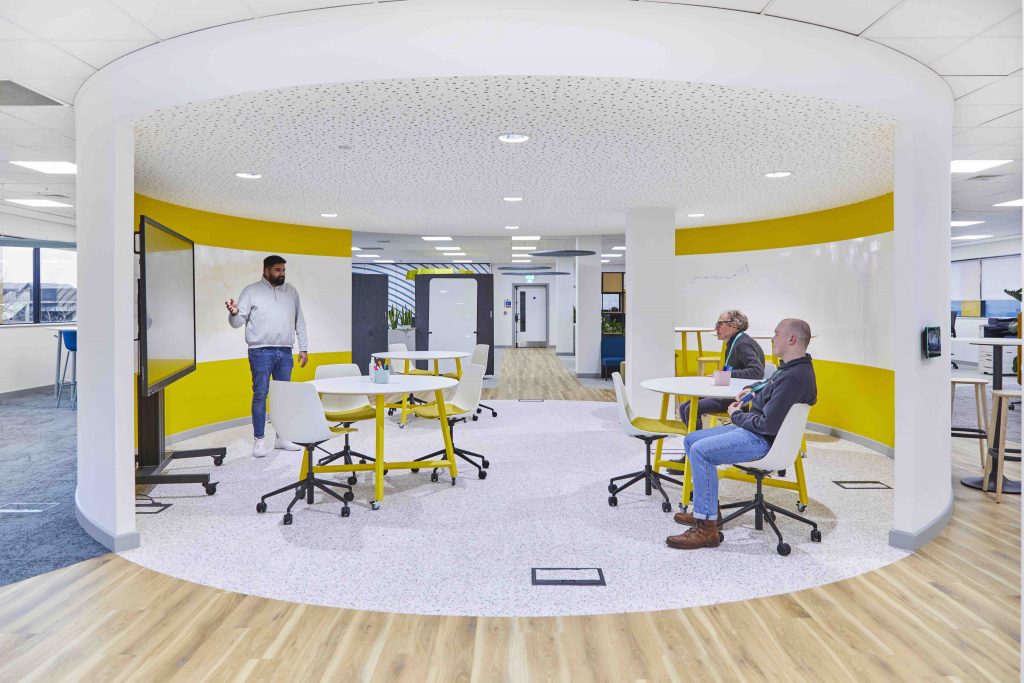
Neurodiverse office design
Why?
1 in 7 employees in the UK are neurodiverse. Of course, this isn’t a trend, but more companies are rightly considering this when designing their offices.
The fact that your office design can greatly affect the wellbeing and happiness of your people rings true even more true for those who are neurodivergent.
What you can do
Here are some examples of changes you can make that will benefit everyone, not just your neurodiverse team members:
- Create calm zones people can use to avoid sensory overload
- Provide ergonomic desks and chairs to enable personalised workstations
- Offer quiet working areas
- Introduce employee resource groups for people to give input and provide feedback on their workspaces
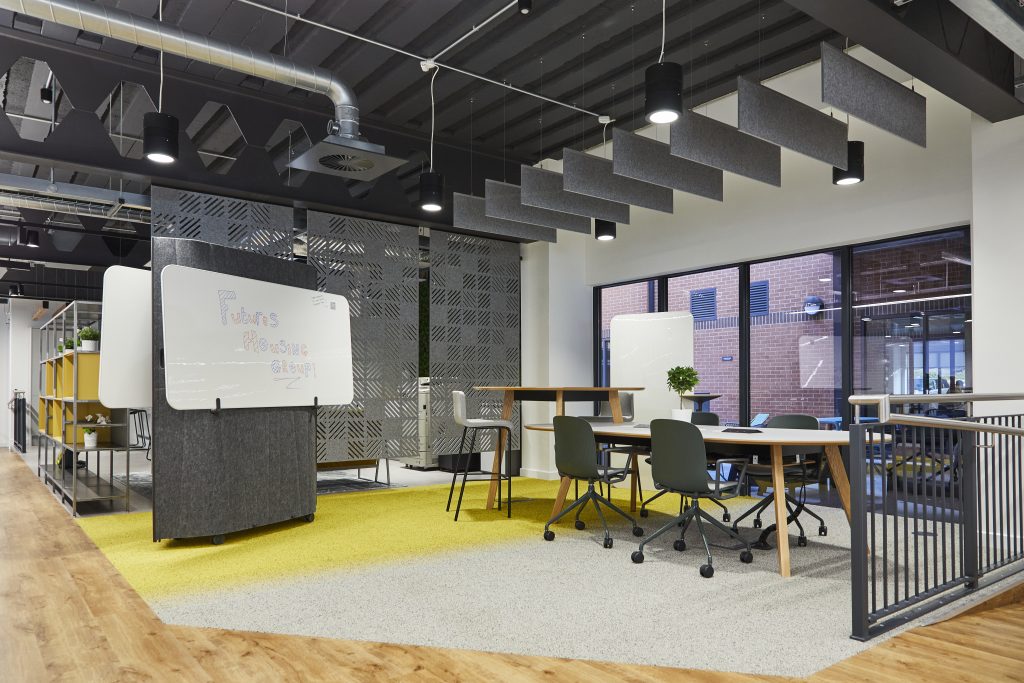
Inspired by these 2024 office design trends?
These are just some of the key trends shaping office design in 2024.
Remember, the ideal office should cater to your company’s specific needs and culture and prioritise employee wellbeing, productivity, and environmental responsibility.
If you are looking for support to strategically plan the future of your office space, get in touch for a conversation with one of our workplace consultants.